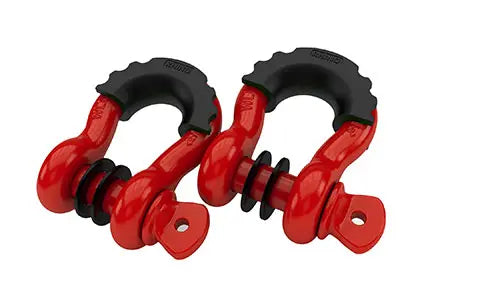
Harley vs Triumph: Comparing Iconic Motorcycle Brands
Harley-Davidson and Triumph represent two storied brands in the motorcycle world, each with over a century of heritage and a loyal fan base.
They have carved unique niches in the industry, with Harley-Davidson being synonymous with the American cruiser lifestyle, while Triumph is famed for its British origins and classic design.
When contrasting these two brands, the debate often extends beyond mere specifications to encompass style, culture, and personal identity.

Despite holding a smaller market share in terms of sales, Triumph has been acknowledged for its diverse range and appeal to various rider types.
Harley-Davidson, on the other hand, has traditionally focused on a more defined segment with models like the iconic 883 Sportster, appealing to riders looking for a particular style and riding experience.
The differing strategies of the two companies have fueled a continuous discussion about their approach to motorcycle manufacturing and branding.
The comparison becomes particularly interesting when examining the cult-like following each brand maintains and how they continue to innovate while preserving their respective legacies.
As both brands adapt to changing market dynamics and rider preferences, they do so with a careful balance of modernization and respect for their roots, which in turn shapes the ongoing Harley versus Triumph narrative.
Brand History

The histories of Harley-Davidson and Triumph Motorcycles span over a century, with each brand carving out its distinct place in cultural and motorcycling history.
Harley-Davidson Origins
Founded in 1903 by William S. Harley and Arthur Davidson in Milwaukee, Wisconsin, Harley-Davidson quickly established itself as a major player in the motorcycle manufacturing world.
The company survived the Great Depression and secured government contracts for military use during both World Wars, which solidified its presence in the industry.
Triumph Motorcycle Legacy
Triumph Motorcycles, established in 1902 in Coventry, England, by Siegfried Bettmann and Maurice Schulte, is revered as the oldest British motorcycle brand.
Triumph has weathered multiple ownership changes and financial challenges, particularly during the 1980s. However, it has experienced a resurgence in recent years and continues to be an influential brand globally.
Motorcycle Design and Engineering

When comparing Harley-Davidson and Triumph in terms of motorcycle design and engineering, one observes distinct brand philosophies.
Harley-Davidson embodies a robust design ethos with a focus on performance, while Triumph is noted for its technical innovations and broad range of models.
Harley-Davidson Aesthetics and Performance
Harley-Davidson motorcycles are renowned for their iconic design and rumbling V-twin engines, which offer a unique sound and riding experience.
The design aesthetic leans towards a vintage-inspired look, with eye-catching chrome finishes and an attention to detail that speaks to their long-standing heritage.
Performance-wise, they tend to emphasize low-end torque suitable for cruising and traditional riding experiences.
- Design Highlights:
- Vintage-inspired aesthetics
- Chrome accents and attention to detail
- Performance Characteristics:
- Emphasis on low-end torque
- Signature V-twin engine sound
Triumph Technical Innovations
Triumph motorcycles, on the other hand, showcase a commitment to technical prowess and engineering variety.
Triumph's range extends from classic retro designs to modern sports bikes and cruisers. They invest in research and development, which is evident in their cutting-edge engine technology and the versatility of their product offerings including advanced rider-assistance systems.
- Product Range:
- Streetfighters, sportbikes, cruisers, tourers, and retro bikes
- Engineering Advancements:
- Cutting-edge engine designs
- Advanced rider-assistance features
Cultural Impact and Community

When evaluating the cultural significance of Harley-Davidson and Triumph, one observes a deep-rooted sense of identity and community.
Harley-Davidson in Pop Culture
Harley-Davidson represents not just a motorcycle brand but also a compelling presence in American pop culture.
The brand has been featured prominently in films, music, and television, acting as a symbol of freedom, rebellion, and Americana.
For instance, the iconic appearance of Harley motorcycles in classic films such as Easy Rider and The Wild One has cemented their status as cultural icons.
The community around Harley-Davidson is characterized by a shared ethos of mutual support and individualism.
This sense of camaraderie is often celebrated at rallies and events that draw in vast numbers of Harley enthusiasts.
Triumph’s Global Community
Triumph maintains a fervent global community, thriving on a legacy of British engineering and a reputation for classic style and performance.
Triumph motorcycles are also seen as status symbols across the world, renowned for their elegance and adventure-riding image.
Their riders are diverse, participating in a range of events from urban ride-outs to long-distance tours, demonstrating the versatility and adaptability of the Triumph marque within different cultures and contexts.
The community's bond is also reflected in online forums and clubs where enthusiasts from across the globe connect and share their passion for Triumph motorcycles.
Rider Experience and Lifestyle

The motorcycle brand one chooses often reflects their approach to riding and the associated lifestyle.
Harley-Davidson and Triumph represent distinct rider experiences and philosophies that resonate with their respective enthusiasts.
The Harley Riding Philosophy
Harley-Davidson stands for a deep-rooted American tradition, it's riding philosophy leans heavily on a sense of freedom and a rebel lifestyle.
Riders are often seen as embodying a bold spirit of independence and tradition. They are typically loyal to the brand and participate in a community that's as much about camaraderie as it is about the bike.
The typical Harley rider prefers:
- Cruising: Long rides on open roads, feeling the power of the bike.
- Customization: Personalizing their motorcycles to reflect individual style.
- Social Riding: Engaging in group rides and brand-oriented events.
Triumph’s Approach to Riding
Triumph, on the other hand, offers a British charm that appeals to riders looking for a blend of classic styling and modern performance.
Triumph riders value craftsmanship and are drawn to the brand's history of innovation and racing heritage. They often appreciate:
- Agility: A dynamic riding experience with nimble handling.
- Design: Elegance and attention to detail in motorcycle design.
- Versatility: A range of bikes suitable for various riding styles, from urban commuting to touring.
- Choosing a selection results in a full page refresh.








